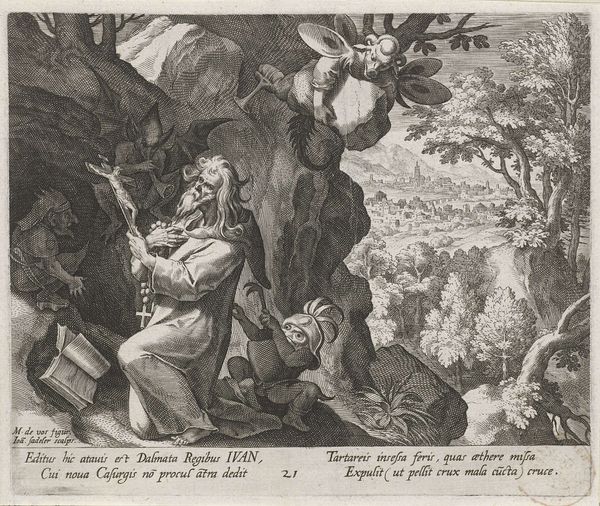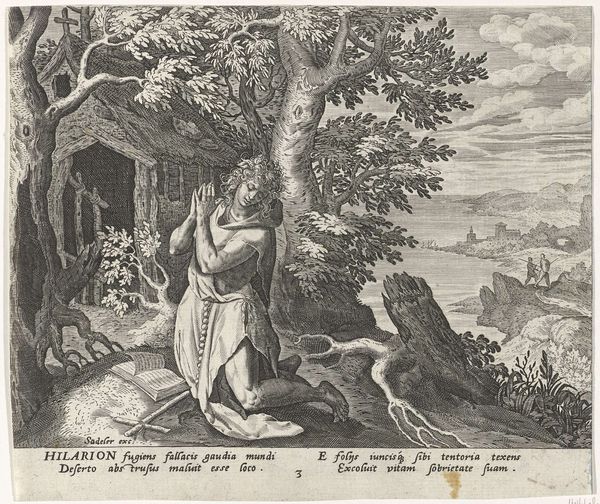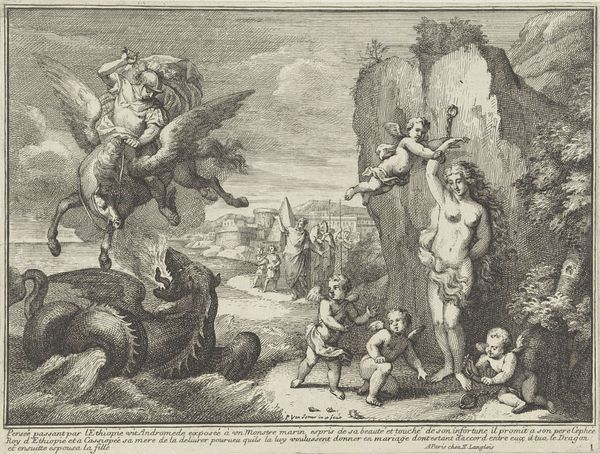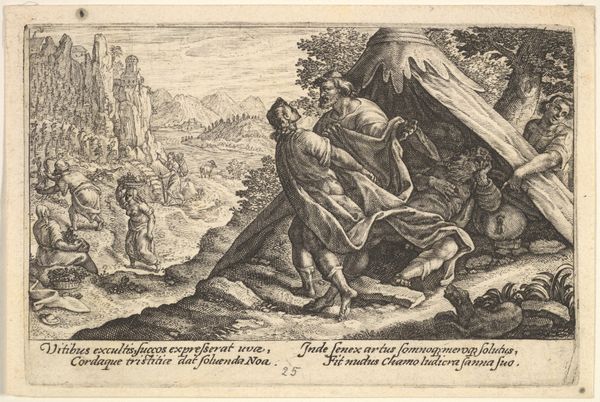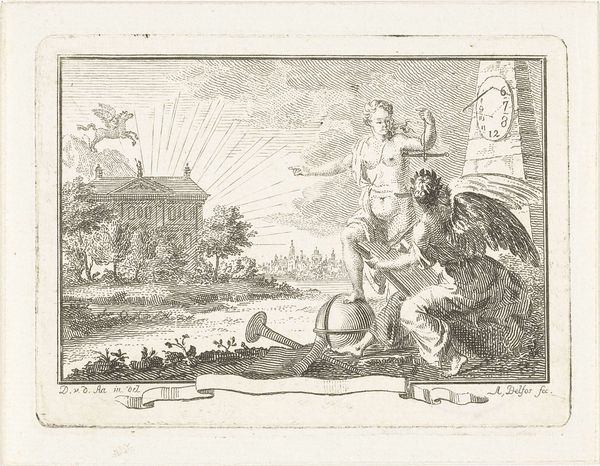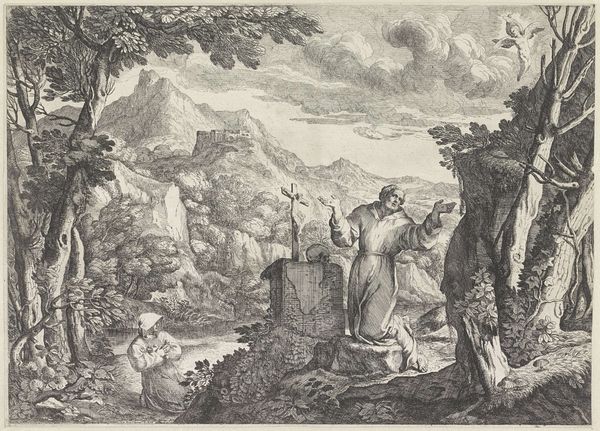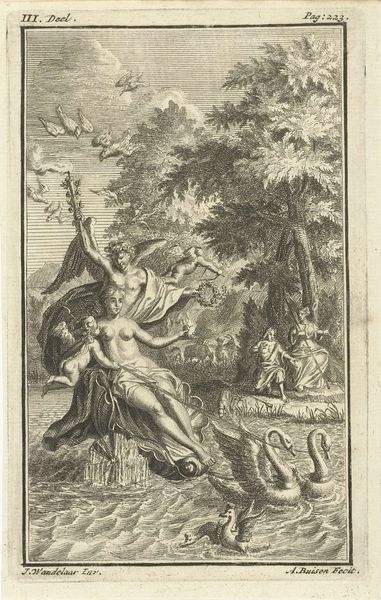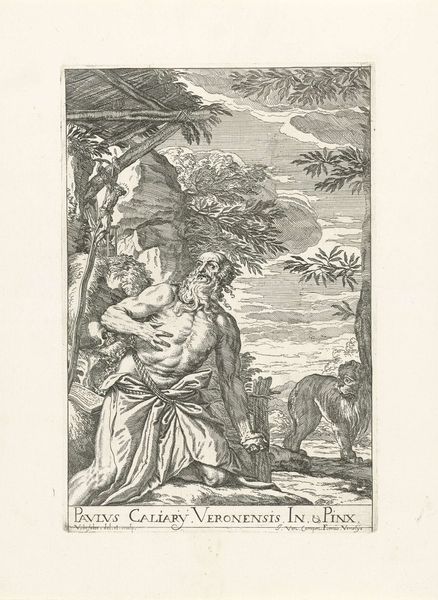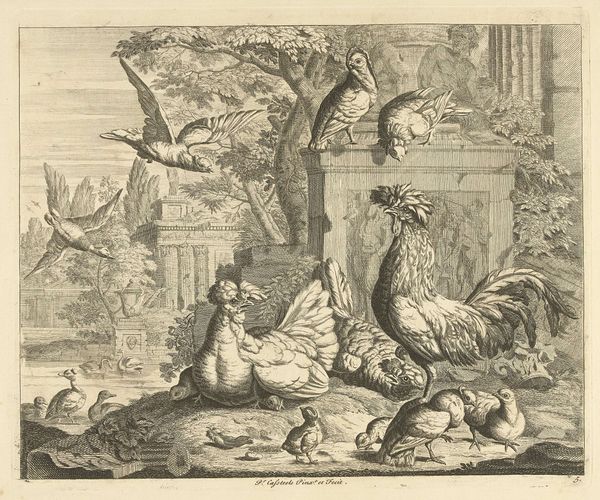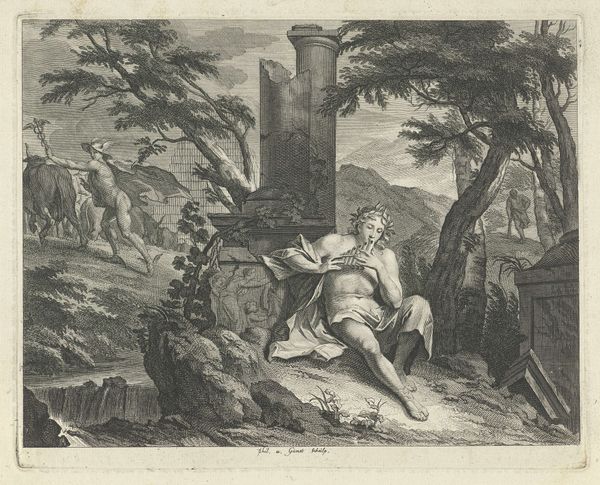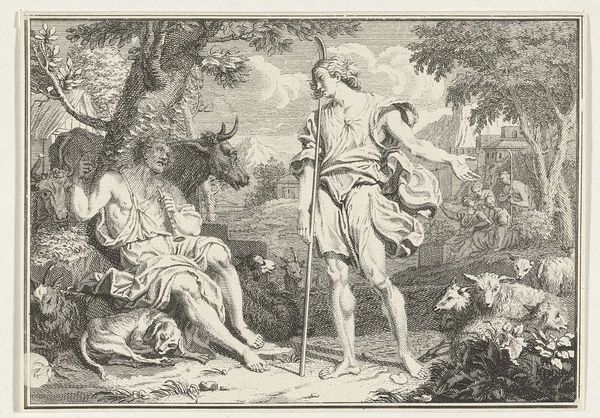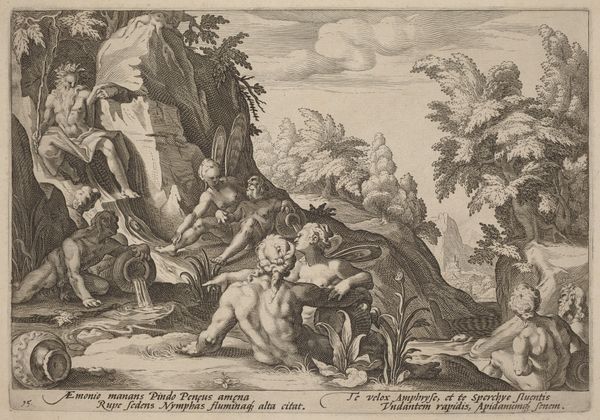
Cadmus vraagt het orakel van Delphi wat hem te doen staat nu hij zijn zuster Europa niet heeft kunnen vinden 1615
0:00
0:00
print, engraving
#
baroque
# print
#
landscape
#
figuration
#
history-painting
#
engraving
Dimensions: height 182 mm, width 255 mm
Copyright: Rijks Museum: Open Domain
Hendrick Goltzius created this print, “Cadmus consults the oracle of Delphi after failing to find his sister Europa”, around 1615. Goltzius made this print during the Dutch Golden Age, a period characterized by a flourishing of artistic production. This image illustrates a story from classical mythology, which at the time served as both entertainment and a reference point for moral and philosophical ideas. Here, Cadmus is depicted kneeling before the oracle, seeking guidance after his failed search for his sister Europa. Europa's abduction, in Ovid’s telling, highlights the vulnerability of women to the desires and actions of powerful men. Cadmus's quest, driven by familial duty, contrasts with Europa's passive role, reflecting the patriarchal values of the time. "What Cadmus represents," as critic Froma Zeitlin writes, "is the difficult and ongoing negotiation between personal desire, social duty, and divine will." The emotional intensity of Cadmus's plea, set against the backdrop of the Delphic landscape, speaks to the universal search for meaning and direction in the face of loss and uncertainty. It invites us to reflect on how societal expectations and power dynamics shape individual destinies and experiences.
Comments
No comments
Be the first to comment and join the conversation on the ultimate creative platform.
